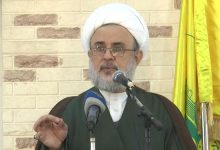Europe and the United States abandon their ambitions in the Middle East

“The Destruction of the West in the Middle East” is the title of a book written by French diplomat Charles Tipout on the history and cooperation between Europe and the United States in the Middle East. In his research, the author addresses differences on both sides of the Pacific and ways to resolve misunderstandings between the two sides, and emphasizes that Europe and the United States should work together in concert on the common challenges they face in the Middle East and North Africa.
According to the paper, since the end of the Cold War, the United States has pursued a unilateral foreign policy in the Middle East and expects its European allies to follow suit without challenging US dominance. However, in the last two decades, this cooperation has been accompanied by challenges. The book enumerates a wide range of differences between Europe and the United States, with Middle East peace and support for the Israeli regime being one of the most important issues, along with the 2015 nuclear deal between Iran and the P5 + 1.
Similar goals but different strategies in the West
The author of this detailed study believes that under an agreement negotiated more broadly from 2014 to 2015, the international community for the first time accepted the principle of Iran’s civilian nuclear program and lifted economic sanctions against Iran in exchange for strict control over elements that could Facilitate Iran’s military activity, approved.
He added: “The Comprehensive Joint Action Plan” focusing on Iran’s nuclear program has become one of the most serious issues of tension between Europe and the United States in the Trump administration. Although Europe supported Washington’s goals even in the fight against ISIS, despite tactical differences, France, Germany and Britain openly opposed Trump’s withdrawal from the UN Security Council and tried to resolve the differences through engagement and participation, but were largely unsuccessful. .
According to the book, “The two sides have similar goals for Iran, but differ on the tools and strategies to achieve them. Europe, unlike Trump and the Conservatives, had spent a great deal of political capital trying to reach an agreement and was by no means willing to destroy it. “That is why in the months since the Trump administration took office, the world has seen a vicious cycle of dialogue between Europeans and the United States.”
“These efforts continued not only before but even after the United States withdrew from the nuclear deal,” the author says. In this direction, in particular, the President of France, Emmanuel Macron, proposed various initiatives, and in some cases, he came close to success, but he could not achieve anything. The US intention to renegotiate the UN Security Council ultimately did not align with Europe’s intention to maintain the agreement. Even Burjam’s survival after the US withdrawal was further questioned by the Trump administration’s “maximum pressure” policy, which included the gradual re-imposition of sanctions. The Middle East peace process and the nuclear negotiations have been based on this process: the United States’ hard power to push and negotiate alongside Europe’s soft power to provide expertise, mediation and economic incentives.
According to the book, “Disputes between the two sides over the 2015 nuclear deal later escalated over Instax and the financial channel, the activation of the dispute resolution mechanism, the maritime security coalition, the activation of the trigger mechanism and even the lifting of arms sanctions on Iran in the UN Security Council.” “The process of interaction between the two sides on each of these issues is described in detail in the book.”
However, the author states: “Both the Middle East peace process and the nuclear negotiations relied on the combination of the United States’ hard power to push and negotiate alongside Europe’s soft power to provide expertise, mediation and economic incentives; “The transatlantic dialogue was then used to draft UN resolutions.”
The situation in the Middle East is different
The author of the book, after first addressing the differences between the two sides, in the second part presented a new strategic perspective of cooperation between Europe and the United States and stated that now the Cold War between Iran and Saudi Arabia, the issue of immigration and displacement, Zionist policies and the desire of countries Qatar, the UAE and Turkey have made the situation very different for their role in the region and the presence of non-governmental actors, and it shows a disordered structure. In this direction, the minimalist approach of the United States to reduce the maximum presence in the region has been further caused. This policy dates back to the time of Barack Obama and then strengthened during the Trump era and is being implemented at the same time as Biden’s rule.
“Biden has made it clear that the Middle East is not a top foreign policy priority,” he said. However, his national security adviser, Jake Sullivan, states that the United States does not want to leave the region directly, but seeks to reassess its current strategy and create the conditions for strengthening regional diplomacy – beyond the nuclear deal with Iran – and reduce its military presence. »Europe and the United States must prioritize the issues they want to put on the transatlantic agenda. In the list of all actions, the issue of Iran and Borjam is at the top of the priorities of both sides.
The author of the book believes in launching a new interaction between Europe and the United States, saying, “The two sides may seem to be taking different paths in the Middle East, but it is not just a matter of the United States having to work with the Europeans. They need to prioritize the issues they want to put on the transatlantic agenda. In the list of all actions, the issue of Iran is at the top of the priorities of both sides because Borjam provides both a framework and a record for their cooperation. The end of “endless wars” requires the architecture of Washington’s policy of non-interference, and this requires allies beyond regional allies. “That is why the Biden government may be paying more attention to the possible role of Europe.”
According to the author of the book, in this situation, Europe must organize itself and interact with the United States in a coherent manner in the Middle East. As Dennis Ross points out: “It is important to determine what Europeans can bring to the table. They need to clarify what kind of capabilities they have for operations in the Middle East. In this context, the rejection of American unilateralism and the abandonment of grand ambitions on both sides of the Atlantic is crucial. Human relations, trade relations, and educational ties between the Middle East, Europe, and the United States show that the West really cannot be separated from the Middle East. “The only way to make American, European and Middle Eastern policies acceptable is to be less ambitious.”
According to Tipaut, “If the United States is looking for an effective partner in the Middle East, it must support the EU as a bloc, despite tactical differences on some issues.” Therefore, in reorganizing the transatlantic dialogue in the Middle East, they should not only seek to find common ground on a specific set of priorities, but also seek to change the mindset of the foundations of transatlantic relations. “The West must also engage with the Middle East in a way that establishes a tripartite relationship between the Middle East, Europe and the United States on an equal footing.”
.

